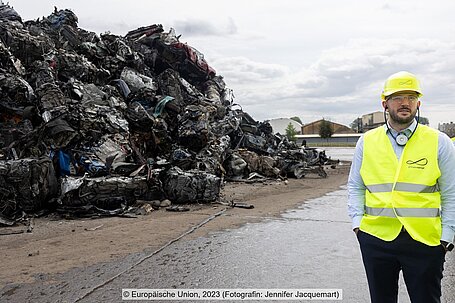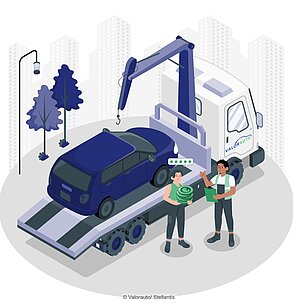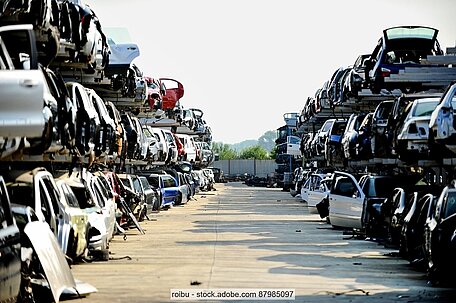
European umbrella organisations representing the recycling industry and the automotive and automotive supply industry have issued a joint communication opposing the expansion of a legal obligation for recyclers to dismantle certain end-of-life vehicle parts before shredding.
Their statement is a response to the EU Commission's proposed amendment to the End-of-Life Vehicles (ELV) Directive, which is currently being discussed in EU parliamentary committees and the Council's preparatory bodies. The proposal significantly lengthens the list of components subject to mandatory dismantling contained in the current version of this Directive.
The three associations – EuRIC (European Recycling Industries' Confederation), ACEA and CLEPA – are not arguing the merits of dismantling end-of-life vehicle (ELV) parts for reuse, provided there is a downstream market for the used components. Annex VII, Part C of the Commission proposal, however, includes parts for which dismantling is not the most efficient solution. What is more, the impact of the proposed changes have never been examined in a life cycle assessments or feasibility studies, the associations point out in their communication. They name dashboards and displays, automotive wiring harnesses and circuit boards measuring more than 10 cm² in size among the components for which a disassembly obligation might not be helpful.
More effective measures on the demand side
To strengthen the market for used automotive parts and end-of-life vehicle part dismantling and recycling, the associations see a need for more effective measures on the demand side. This could be achieved, for example, through reduced VAT rates or car insurance incentives, explained the associations.
According to EuRIC, ACEA and Clepa, mandatory dismantling of vehicle parts has to be technically and economically feasible while at the same time being proportionate to the EU Green Deal and in line with its objectives. There also has to be a downstream market for the used dismantled parts. Manual dismantling requirements are only justifiable if the relevant objectives cannot be achieved by other means. Essentially, the best available technology should be used for each recycling process, the associations emphasise in their joint communication.
High costs and shortage of skilled workers
According to the associations, the list of parts in the proposed Directive would force auto recyclers to remove vehicle parts that are not suitable for reuse or recycling or for which there is simply no demand – parts that would then have to be destroyed. "This involves high dismantling, transport and storage costs and will lead to an additional carbon footprint with no benefit to the environment," explain the associations.
Another point underlined in the communication is the shortage of skilled workers for these manual dismantling tasks in many EU member states. Moreover, the timeline for the fulfilment of the obligations for the individual parts listed in the Annex were inconsistent and should be aligned.
Reuse not always an option
With regard to the proposed dismantling obligation for dashboards and displays, EuRIC, ACEA and CLEPA also point out in their communication that there is no demand for used parts of this kind due to the age of the vehicle. Even as a separate waste stream, these components would still constitute what they call a "wild mix of materials" and would not contribute to a better quality of recyclate. Dismantling, shredding and post-shredding technologies would still be needed.
According to the three associations, there is just as little justification for mandatory dismantling for wiring harnesses and larger printed circuit boards (PCBs). The precious metal content of PCBs depends on the respective functions and components and not their size. It is also very difficult to remove wiring harnesses from combustion engine vehicles, and even if they are removed, these parts cannot be reused because they are custom-designed for the specific vehicle. The recovery of the valuable secondary materials is only possible with advanced post-shredder treatment (PST) processes.
Comparable results with PST method
The associations also warn that previous investments in PST equipment by "pioneers in the recycling industry" and Europe's leading role in supplying the corresponding technology could also be lost. In fact, expanding dismantling requirements undermines existing innovative processes used to recover very high-quality grades of various materials post-shredding.
In connection with this, they point out that the state of the art in shredding and PST processes as well as future solutions that will be optimised through digitalisation and artificial intelligence (AI) allow for the recovery of a huge variety of materials. Provided that sufficient capacity is created for modern PST processes that are economically efficient and can be implemented on an industrial scale, comparable material separation results can be achieved, which is why it is imperative for the future legal framework to promote the widespread use of advanced PST processes and recycling technologies, the three associations add.



